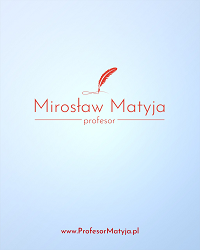An Ability in Translating Recount Text by Using Translating Strategies
Abstract
This research is focused on the ability of the students in translating a recount text by using translating strategies at the first grade students of SMA Swasta Yayasan Perguruan Keluarga (YPK) Pematangsiantar. This study tries to find out: 1) The translation strategy that are used by the students in the translating of a recount text; 2) The translation strategy that is mostly used by the students in the translating of a recount text; 3) The students’ perception towards the translating tasks as an alternative task to enhance their reading habit and vocabulary. From the data analysis it can be concluded that: 1) In translating the recount text entitled Borobudur, especially in dealing with certain words, the students employ ten translation strategy. These strategies are taken from the Newmarks’ translation strategy (1988: 81-93). The strategies which are applied by the students in this study are the transference strategy, the naturalization strategy, the cultural equivalent strategy, the shift or transposition strategy, the modulation strategy, the recognized translation strategy, the compensation strategy, the expansion strategy, the couplets strategy, and the triplets strategy; 2) The cultural equivalent strategy is the one which is mostly used by the students in translating the text. Based on Newmark (1988: 82-83), this strategy is commonly found in translating popular fiction texts; 3) The students’ perception towards the translating tasks which are given by their teacher is that the translating tasks can help them enhance their reading habit and increase their vocabulary. The reason behind this perception is because they admit that they even do not read English texts unless their teacher has them do so. In this case, it is obviously seen that the students agree that the translating task is an alternative task to make them read English texts. Although in the reality translating task is neglected by many educators, since it is included into one of the characteristics of the Grammar Translation method which is assumed only to focus on knowing grammar rules, remember vocabularies, and produce a good translation of target language.
Keywords
Full Text:
PDFReferences
Amalia, Ros Lia. (2008). The Correlation Between Students’ Reading Frequency and Their Reading Ability. Unpublished Thesis. Bandung: English Education Department, Indonesia University of Education.
Baker, Mona. (1992). In Other Words: A Coursebook on Translation. London: Routledge.
Bell, T Roger. (1991). Translation and Translating: Theory and Practice. The United States of America: Longman.
Brown, H, Douglas, S., (2001). Teaching by Principles: An Interactive Approach to Language Pedagogy. San Francisco: Longman.
Chesterman, Andrew. Translation theory course. [Online]. Available at: http://www.helsinki.fi/~che sterm/TransTheory.html
Effendi, P Rahmat. (2008). Cara Mudah Menulis dan Menerjemahkan. Jakarta: Yayasan Bina Edukasi dan Konsultasi Hapsa et Studia.
Garson G. David. (2008). Case Studies. [Online]. Available at: http://faculty.chass.ncsu.edu/
garson/PA765/cases.htm [July 04, 2009] Gee, W Roger. (1999). “Encouraging ESL Students to Read”. TESOL Journal. 8, (1), 3-6.
Gerot & Wignell. (1995). Making Sense of Functional Grammar. Australia: Gerd Stabler.
Kim Ebensgaard Jensen, Basics of Translation, The process of Translating– spring 09.
Larson, L Mildred. (1984). Meaning-Based Translation: A Guide to Cross-Language Equivalence. The United States of America: University Press of America.
Luppescu, Stuart and Day Richard R. (1993). “Reading, Dictionaries, and Vocabulary Learning”. Language Learning: A Journal of Research in Language Studies. 43, (2), 263-267.
Mandasari, Is naa. (2007). An Analysis of Translating Procedures Used In Selected Chapters of United Nations Convention of The Law of The Sea (UN CLOS 1982) Translated by Department of Foreign Affair. Unpublished Thesis. Bandung: English Education Department, Indonesia University of Education.
Newmark, Peter. (1988). A Textbook of Translation. Hertfordshire: Prentice Hall International (UK) Ltd.
Newmark, Peter,1988, A textbook of translation. Prentice-Hall International (New York).
Nida, A Eugene. (1964). Toward A Science of Translating. Netherlands: E.J.Brill, Leiden.
Nida, A Eugene. (2001). Context in Translating. Amsterdam: John Benjamin Publishing Company.
Noie, S. (2018). An Investigation of Mystic Term on “Conference of The Birds” of Attar on The Basis of Van Doorslaer’s Map. Budapest International Research and Critics in Linguistics and Education (BirLE) Journal Vol I (1): 1-10.
Nord, C. 1991. Text analysis in Translation: Theory, methodology and didactic application of a model for translation-oriented text analysis.
Ordudari, Mahmoud. (2007). Translation Procedures, Strategies and Methods. In Translation Journal. [Online], Vol 11 (3), 10 pages. Available at: http:/www.accurapid.com/journal/
culture.htm [December 15, 2008]
Pulungan, A.H. et al. (2019). Cognitive Processes on Translation Studiesof English Language Learners. Britain International of Linguistics, Arts and Education (BIoLAE)Journal: Vol. 1 (2):101-112.
Siregar, M. (2019). Pedagogical Translation Use by Scientific Approach in Teaching English. Budapest International Research and Criticsin Linguistics and Education (BirLE) Journal Vol 2 (4): 111-119.
Sugiyono. (2007). Metode Penelitian Kuantitatif dan Kualitatif dan R&D. Bandung: Alfabeta.
Tim Penyusun Universitas Pendidikan Indonesia. Pedoman Penulisan KaryaIlmiah. (2005). Bandung: UPI.
Weber, K Wilhelm. (1984). Training Translators and Conference Interpreters. New Jersey: Prentice-Hall, Inc.
DOI: https://doi.org/10.33258/birle.v4i1.1792
DOI (PDF): https://doi.org/10.33258/birle.v4i1.1792.g2224
Article Metrics
Abstract view : 148 timesPDF - 116 times
Refbacks
- There are currently no refbacks.

This work is licensed under a Creative Commons Attribution-ShareAlike 4.0 International License.

This work is licensed under a Creative Commons Attribution-ShareAlike 4.0 International License

_.gif)



















_.gif)



